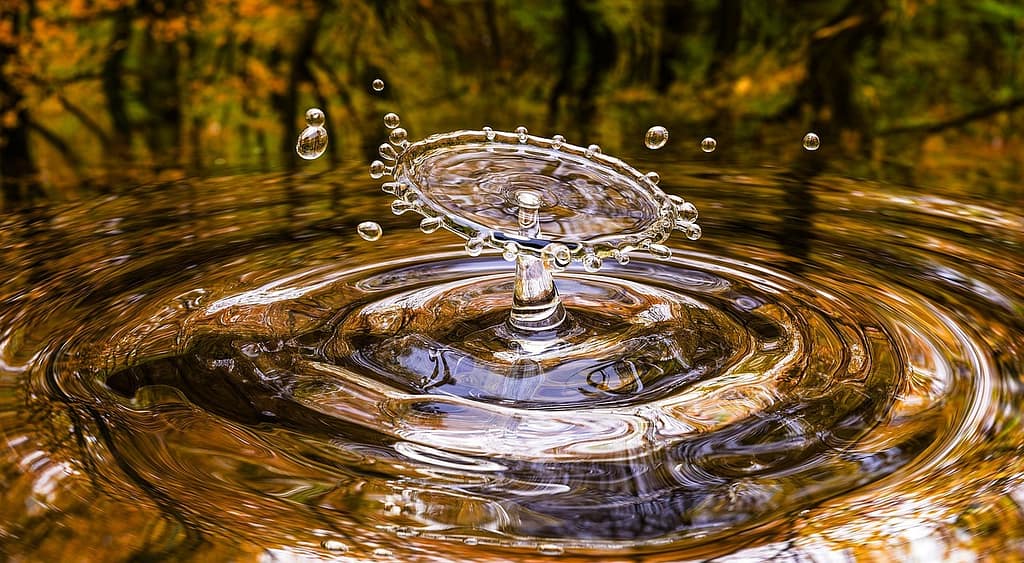Ever wonder if there’s a difference between spring water and purified water? While both quench your thirst and are safe for consumption, they have distinct characteristics and benefits. This article delves into the world of spring and purified water, exploring their sources, purification processes, unique qualities, and ideal uses.
Introduction to Spring and Purified Water
Spring water and purified water are staples on grocery store shelves and popular choices for hydration. Spring water boasts a “natural” image, conjuring up images of pristine mountain springs. Purified water, on the other hand, emphasizes its cleanliness and lack of impurities. But what exactly does this all mean?
Spring water comes from natural underground sources, filtered through layers of rock and sand. Purified water, however, undergoes various treatments to remove impurities. Understanding these distinctions can empower you to make informed decisions about the water you drink.

Natural Spring Water: A Journey from Underground to Your Glass
Source of Natural Spring Water
Spring water originates from underground aquifers, vast natural reservoirs filled with water. Rain and snowfall act as nature’s water filters, trickling down through layers of rock and sand, picking up minerals along the way. Eventually, this water reaches an impermeable layer of rock, creating a pressurized zone. When the pressure builds enough, it forces the water to the surface, creating a natural spring.
These springs are not simply random gurgles in the ground. To be classified as spring water, the source must meet specific criteria set by regulatory bodies like the U.S. Food and Drug Administration (FDA). The source must continuously flow to the earth’s surface, ensuring a constant supply of fresh, underground water.
Characteristics of Natural Spring Water
Spring water is often lauded for its “natural” taste, which can vary depending on the specific mineral content of the aquifer it originates from. Unlike purified water, spring water typically contains a variety of naturally occurring minerals like calcium, magnesium, and potassium. These minerals contribute to the taste and may offer some health benefits, although the exact impact is still being researched.
Spring water generally has a slightly higher total dissolved solids (TDS) content compared to purified water. TDS refers to the total amount of dissolved inorganic and organic substances in the water. While not necessarily harmful, higher TDS can affect the taste and mouthfeel of the water. Some people prefer the subtle minerality of spring water, while others may find purified water’s clean taste more appealing.

Purified Water: A Multi-Step Transformation
Purification Process
Unlike spring water, which undergoes natural filtration, purified water goes through a series of controlled treatments to remove impurities, contaminants, and minerals. Common purification methods include:
- Distillation: This process involves boiling the water to separate it from impurities. The steam is then captured and condensed back into liquid form, leaving behind contaminants in the boiling chamber. Distilled water is known to be very pure but may lack the taste some prefer due to the absence of minerals.
- Reverse Osmosis (RO): This method utilizes a semi-permeable membrane that allows water molecules to pass through while filtering out larger contaminants and minerals. RO water generally retains some minerals, depending on the specific membrane used.
- Deionization: This process removes charged particles like minerals and salts using ion exchange resins. Deionized water has most minerals removed, making it a good choice for industrial applications but not necessarily the most flavorful for drinking.
The specific purification methods used can influence the final characteristics of the water. Some manufacturers may even add certain minerals back into the water after purification to improve taste.
Types of Purified Water
There are different types of purified water depending on the specific purification method used:
- Distilled Water: As mentioned earlier, distilled water is known for its exceptional purity but may taste bland due to the lack of minerals.
- Reverse Osmosis Water: RO water generally retains some minerals, offering a balance between purity and taste. It’s a popular choice for home filtration systems.
- Deionized Water: Deionized water has most minerals removed, making it a good conductor of electricity and ideal for use in laboratories or industrial settings. However, it’s not typically recommended for everyday drinking due to its lack of taste.

Unveiling the Differences: Spring vs. Purified Water
The key difference between spring and purified water lies in their source and processing. Spring water is naturally filtered underground, while purified water undergoes various treatments to remove impurities.
Here’s a table summarizing the key differences:
Spring vs. Purified Water: A Comparison Table
| Feature | Spring Water | Purified Water |
|---|---|---|
| Source | Natural underground aquifers | Municipal water supplies, wells |
| Processing | Natural filtration | Distillation, reverse osmosis, deionization |
| Minerals | Contains naturally occurring minerals (calcium, magnesium, potassium) | May have most minerals removed, depending on the purification method |
| Taste | Can vary depending on mineral content, may have a subtle minerality | Generally clean and neutral taste |
| Total Dissolved Solids (TDS) | Generally higher TDS | Generally lower TDS |
| Regulations | Must meet FDA or similar standards for spring water | Must meet regulations for drinking water |
| Typical Uses | Everyday hydration, cooking | Everyday hydration, sensitive taste buds, low-mineral diets (infants), some appliances |
| Environmental Impact | Can have impact due to plastic bottles, transportation | Generally lower impact, especially with home filtration |
| Cost | Generally more expensive than tap water | Can vary depending on brand, purification method, home filtration systems more cost-effective |
Here are some additional points to consider when comparing spring and purified water:
- Environmental Impact: Spring water bottling can have an environmental impact due to plastic bottle production and transportation. Purified water, especially when obtained through home filtration systems, can be a more eco-friendly option.
- Cost: Spring water can be more expensive than tap water due to bottling and transportation costs. Purified water can also vary in price depending on the brand and purification method. Home filtration systems offer a cost-effective way to obtain purified water.
- Regulation: Spring water sources must meet specific regulations to ensure purity and safety. Purified water must also adhere to drinking water standards.
Unveiling the Benefits: Spring Water vs. Purified Water
Both spring and purified water offer distinct advantages for hydration.
Benefits of Spring Water
- Naturally Occurring Minerals: Spring water provides a source of electrolytes like calcium, magnesium, and potassium. While the exact health benefits of these minerals in spring water are still being studied, some people believe they contribute to overall health and hydration.
- Taste: Spring water can have a refreshing, slightly mineral taste that some people find preferable to the clean, neutral taste of purified water.
- Variety: Spring water brands may come from different sources, offering a variety of mineral profiles and taste experiences.
Benefits of Purified Water
- Clean Taste: Purified water offers a clean, neutral taste that appeals to those with sensitive taste buds or who dislike the minerality of spring water.
- Reduced Contaminants: Purification removes impurities and potential contaminants that may be present in some water sources. This is especially beneficial in areas with concerns about water quality.
- Low Mineral Content: Purified water is a suitable choice for individuals on restricted mineral diets or for diluting medications that may interact with certain minerals.
- Versatility: Purified water is a good choice for various uses beyond drinking, such as in CPAP machines, for making coffee or tea, or for certain recipes where mineral content might affect the taste.

The Best Choice for You: Spring or Purified Water?
Ultimately, the best choice of water depends on your individual preferences and needs. Here are some factors to consider:
- Taste: Do you prefer the subtle minerality of spring water or the clean taste of purified water?
- Health Considerations: Are there any health concerns that might influence your choice, such as needing low-mineral content for a specific diet?
- Budget: Spring water can be more expensive than purified water, especially when considering bottled options.
- Environmental Impact: If environmental impact is a concern, consider using a home filtration system for purified water or opting for refillable spring water bottles.
- Local Water Quality: If you have concerns about your tap water quality, purified water or a home filtration system may be a good option.
Conclusion: Hydration for Everyone
Spring water and purified water provide safe and refreshing options for hydration. Understanding the differences in their sources, processing methods, and benefits allows you to make informed choices based on your taste, health needs, and lifestyle. Whether you choose the natural taste of spring water or the clean neutrality of purified water, remember to stay hydrated for optimal health and well-being.





Pingback: Spring Water Benefits: A Refreshing Way to Stay Healthy - Techy Tempest